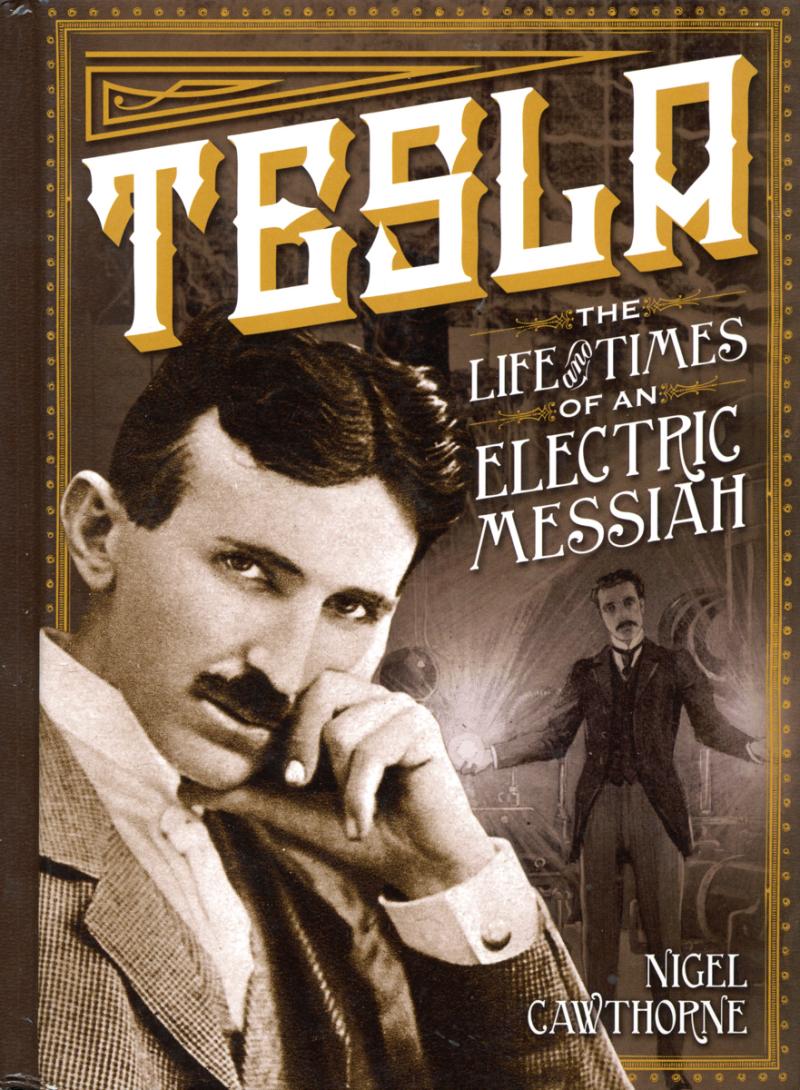
Nikola Tesla Books
Tesla - The Life and Times of an Electric Messiah
Nikola Tesla (1856 - 1943) is the towering genius who made the modern world. All the electrical devices around us owe something to him. Not only did he invent many of the gadgets we depend on today, he had a vision of the future, much of which has become reality long after his death. As long ago as 1900, Tesla wrote of a world system of wireless transmission:
The World-System has resulted from a combination of several original discoveries made by the inventor in the course of long continued research and experimentation. It makes possible not only the instantaneous and precise wireless transmission of any kind of signals, messages or characters, to all parts of the world, but also the inter-connection of the existing telegraph, telephone, and other signal stations without any change in their present equipment. By its means, for instance, a telephone subscriber here may call up and talk to any other subscriber on the globe.
This is surely the mobile phone network we have over a century later. And in his autobiography, My Inventions, published in 1919, he envisaged that in nine months, without undue expense, he could deliver:
- The interconnection of existing telegraph exchanges or offices all over the world;
- The establishment of a secret and noninterferable government telegraph service;
- The interconnection of all present telephone exchanges or offices around the globe;
- The universal distribution of general news by telegraph or telephone, in conjunction with the press;
- The establishment of such a 'World System' of intelligence transmission for exclusive private use;
- The interconnection and operation of all stock tickers of the world;
- The establishment of a world system of musical distribution, etc.;
- The universal registration of time by cheap clocks indicating the hour with astronomical precision and requiring no attention whatever;
- The world transmission of typed or handwritten characters, letters, checks, etc.,
- The establishment of a universal marine service enabling the navigators of all ships to steer perfectly without compass, to determine the exact location, hour and speed; to prevent collisions and disasters, etc.;
- The inauguration of a system of world printing on land and sea;
- The world reproduction of photographic pictures and all kinds of drawings or records...2
Here we have the internet, GPS and Satnav. But Tesla was not just a visionary who delivered theory. He was a practical man who pioneered alternating current that made it possible to transmit electricity over long distances, allowing electrical appliances to be powered by remote power stations, rather than have a power station on every street corner as the earlier direct current system envisaged.
He is now acknowledged to have beaten Guglielmo Marconi to the invention of the radio. Indeed, he spoke of his world system of wireless transmission the year before Marconi transmitted the first radio signal across the Atlantic. His Tesla Coil, invented in 1891, is widely used in radio and television sets, and other electronic equipment. He developed electric motors, generators, X-rays, fluorescent tubes, remote control and radar. However, many of his inventions are unacknowledged because he was so busy developing new ideas to bother patenting them.
Although he was never awarded a Nobel Prize, three Nobel laureates lauded him as 'one of the outstanding intellects of the world who paved the way for many of the technological developments of modern times'.3 He appeared on the cover of Time magazine and the unit of magnetic induction, a minor planet, a crater on the moon, an award and an airport are named after him. He was also played by David Bowie in the 2006 movie The Prestige.
Otherwise, with his talk of death rays and communication from other planets, his image endures as that of the mad scientist. But he was far from mad. He was one of the outstanding figures of the 20th century, arguably more influential than Einstein, Stravinsky or Picasso, and 70 years after his death, he deserves to be better known.


